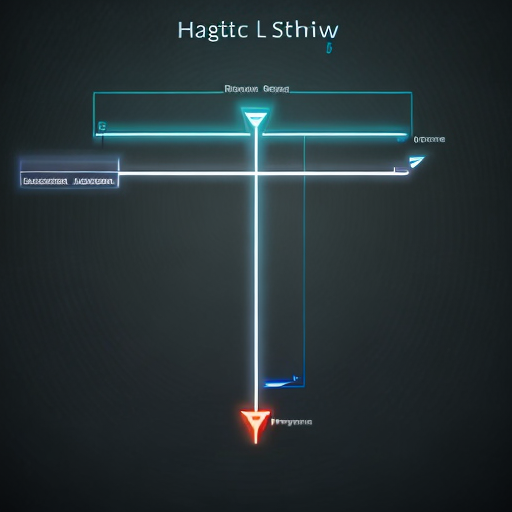Understanding Flowcharts in Programming
Introduction to Flowcharts: Understanding the Basics of Programming Visualization
Welcome, fellow adventurers of the programming realm! Today, we embark on a whimsical journey into the enchanting world of flowcharts. Picture this: a visual representation of your code, like a magical map guiding you through the labyrinth of algorithms. Flowcharts are the secret code-cracking language of programmers, where boxes and arrows dance together to reveal the logic behind our digital creations. They are the superheroes of visualization, transforming complex programming concepts into a delightful dance of shapes and symbols. So, grab your pens and prepare to dive into the captivating realm of flowcharts, where lines and loops come alive, and debugging becomes an exhilarating quest for perfection. Let the flowcharting adventure begin!
The Building Blocks of Flowcharts: Symbols and Notations for Effective Programming
An interesting fact about flowcharts in programming is that they were originally developed by computer scientist and naval officer Herman Goldstine during World War II. He created flowcharts as a way to visualize and document the complex sequences of instructions used in military operations. Today, flowcharts are widely used in programming as a graphical representation of algorithms and processes, helping programmers to plan, analyze, and communicate their code effectively.
Greetings, fellow code enthusiasts! Today, we embark on a thrilling expedition into the heart of flowcharting, where symbols and notations reign supreme. Imagine a world where rectangles, diamonds, and arrows hold the power to unlock the secrets of programming. These symbols are the building blocks of flowcharts, each with its own special meaning and purpose. Rectangles represent processes, where the magic of computation happens. Diamonds, on the other hand, symbolize decisions, where our code takes a fork in the road. And let’s not forget about the arrows, the trusty guides that connect our symbols and direct the flow of our program’s logic. Together, these symbols form a visual language that speaks volumes to programmers, allowing us to communicate and understand complex algorithms with ease. So, grab your pens and prepare to immerse yourself in the captivating world of flowchart symbols, where the art of programming comes to life in a symphony of shapes and lines. Let the flowcharting adventure continue!
Flowcharting Techniques: Creating Logical Structures for Efficient Program Design

Greetings, fellow coding enthusiasts! Today, we embark on a quest to unravel the secrets of flowcharting techniques, where logical structures come to life, paving the way for efficient program design. Flowcharts are the architects of our code, providing a visual blueprint that guides us through the intricate maze of algorithms. With their help, we can break down complex problems into manageable steps, ensuring that our programs run smoothly and efficiently.
One key technique in flowcharting is the use of decision structures. These structures allow us to incorporate conditional statements into our code, enabling our programs to make choices based on specific conditions. By representing these decisions with diamonds in our flowcharts, we can easily visualize the different paths our program may take, ensuring that our logic is sound and our code is robust.
Another important technique is the use of loops. Loops are like the magical spells of programming, allowing us to repeat a set of instructions until a certain condition is met. By incorporating loops into our flowcharts, we can create efficient and concise code that automates repetitive tasks. Whether it’s a for loop, a while loop, or a do-while loop, flowcharting techniques help us design these loops in a way that ensures our programs run smoothly and effectively.
Furthermore, flowcharting techniques also involve the use of subroutines or functions. These are like mini-programs within our main program, designed to perform specific tasks. By breaking down our code into smaller, reusable chunks, we can enhance the readability and maintainability of our programs. Flowcharts help us visualize the flow of control between these subroutines, ensuring that our program’s logic remains clear and concise.
In conclusion, flowcharting techniques are the secret weapons in a programmer’s arsenal, enabling us to create logical structures that lead to efficient program design. By incorporating decision structures, loops, and subroutines into our flowcharts, we can navigate the complexities of coding with ease. So, fellow adventurers, let us embrace the power of flowcharting and embark on a journey towards efficient and elegant program design. May your flowcharts guide you to programming greatness!
Benefits and Applications of Flowcharts in Programming: Enhancing Code Readability and Debugging
A fun fact about flowcharts in programming is that they were actually inspired by the process flow diagrams used in engineering and manufacturing industries. The concept of visually representing the flow of a process using symbols and arrows was adapted to create flowcharts in programming, making it easier for programmers to plan and understand the logic of their code.
Flowcharts, the unsung heroes of programming, offer a multitude of benefits and applications that enhance code readability and debugging. These visual representations of our code act as a roadmap, guiding us through the intricate paths of algorithms. By breaking down complex logic into simple, digestible steps, flowcharts make our code more readable and understandable, both for ourselves and for fellow programmers. Additionally, flowcharts serve as invaluable tools for debugging. When faced with a bug or error, we can trace the flow of our program through the flowchart, identifying potential bottlenecks or logic flaws. This visual approach to debugging allows us to pinpoint issues more efficiently and resolve them with precision. So, let us embrace the power of flowcharts, as they illuminate our code, making it more readable and aiding us in the quest for bug-free programming.
Corey is a charismatic man with an infectious sense of humor, making him a popular figure in the blogging community. With a passion for coding, he effortlessly combines his technical expertise with his witty writing style, captivating readers from all walks of life. Corey's blog is a treasure trove of coding tips, tricks, and tutorials, sprinkled with his trademark humor that keeps his audience engaged and entertained. Whether he's unraveling complex algorithms or sharing hilarious anecdotes from his coding adventures, Corey's unique blend of wit and expertise makes him a must-follow blogger for anyone interested in the world of coding.








